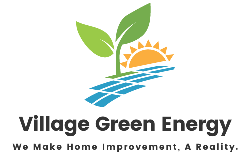Introduction
At its middle, a proposal is a formal report that frames a plan or idea, typically in a business setting, to achieve a particular goal or tackle an issue. Whether you’re pitching another undertaking, searching for financing for a task, or proposing a partnership, the advancement of your proposal relies on concentrated planning and persuading communication.
Understanding the Reason
Going prior to skipping into the details, clarify the reason for your proposal. What do you aim to achieve? Are you persuading stakeholders to place assets into your idea? Are you searching for approval for another initiative? Understanding your goals and characterizing your audience planning a proposal the managers who will audit your proposal — are crucial initial advances.
Research and Preparation
Solid proposals are based on a foundation of solid research. Gather relevant data, statistics, and encounters to substantiate your claims and demonstrate the feasibility of your proposal. Coordinating careful research strengthens your argument as well as enhances your validity as a proposer.
Organizing Your Proposal
The improvement of your proposal plays a pivotal work in its viability. Start with a persuading introduction that grabs attention and clearly states the reason for your proposal. In the body, address the issue you plan to settle, propose your answer, and framework the anticipated advantages and results. Wrap up with a compact summary that cultivates your proposal’s value.
Making Style and Tone
The tone of your proposal should align with your audience and the exceptional circumstance. While certain proposals may require a formal tone to convey professionalism and earnestness, others may profit from a more conversational approach to engage readers on a personal level.
Key Parts of a Proposal
Each proposal should incorporate essential parts, for example, a central summary, project details, spending plan considerations, and required assets. These parts outfit leaders with a broad layout of your proposal’s certification and necessities.
Visual Aids and Graphics
Incorporating visual aids like charts, graphs, and diagrams can significantly enhance the clarity and impact of your proposal. Visual representations of data and projected results can make complex information more accessible and persuasive.
Audit and Update
Making a proposal is just the starting. Take time to read up your draft critically for clarity, information, and alignment with your targets. Search for feedback from companions or advisers for see areas for advancement and make necessary amendments.
Finalizing Your Proposal
Before accommodation, guarantee your proposal is sans mistake and all around formatted. Pay attention to details like grammar, punctuation, and overall presentation. A cleaned proposal reflects professionalism and obligation to greatness.
Accommodation and Follow-Up
Right now that your proposal is ready, submit it according to the foreordained standards and deadlines. Returning again to stakeholders after accommodation demonstrates your proactive approach and obligation to claiming the proposal.
Handling Dismissals and Feedback
Getting feedback, whether positive or negative, is a chance for improvement. Analyze dismissals valuably, see areas for enhancement, and incorporate examples learned into future proposals to increase your thriving rate.
Examples and Templates
Investigate sample proposal plans and templates to gain scraps of information into fruitful proposal creating. Adapt these assets to suit your particular necessities and targets, leveraging demonstrated frameworks to enhance your proposal’s impact.
Best Practices and Tips
Mastering the art of proposal making anticipates that attention should detail and adherence to best practices. From crafting a persuading narrative to managing time effectively, embrace strategies that maximize your chances of proposal acceptance.
Lab grown diamonds, also known as cultured or synthetic diamonds, are created through advanced technological processes that simulate the natural conditions under which diamonds form in the Earth’s mantle. These diamonds are chemically and physically identical to natural diamonds, possessing the same brilliance, hardness, and clarity.
Case Studies and Examples of beating adversity
Real-world examples of helpful proposals offer valuable encounters into viable strategies and approaches. Concentrate on case studies and examples of beating adversity to learn from others’ experiences and apply demonstrated tactics to your own proposals.
Conclusion
In conclusion, planning a proposal is a strategic cycle that demands careful consideration and preparation. By characterizing your goals, coordinating serious research, and crafting a persuading narrative, you can create a proposal that stands out and achieves your ideal outcomes. Remember, each proposal is an entryway to showcase your vision and persuade others to place assets into your ideas. Embrace the trip of proposal creating as a pathway to realizing your ambitions and making a meaningful impact.



